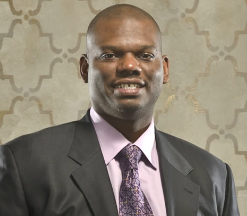How do you view money?
A recent study found that 98 percent of Americans have at least one money bias — and it’s working against them financially.
A new behavioral finance study from financial services firm Morningstar found that nearly all of the 1,211 survey respondents (98 percent) exhibited one or more financial biases. The more biases one had directly correlated with worse financial outcomes than their peers. This included lower credit scores, savings and investing accounts balances.

The Morningstar research found that there were four common biases. They are:
- Present bias: This occurs when you’d rather splurge in the here and now than think about your long-term financial goals. “Someone with this bias might overpay for goods and services that bring them gratification now and neglect to put money away for retirement,” CNBC reports.
- Base rate neglect: “The tendency to judge the probability of something happening based on new, easily accessible information while ignoring the original assumptions. Investors tend to overreact to new information about a stock; for instance, often overselling based on bad news or piling on based on good news,” CNBC reports.
- Overconfidence: Some people overestimate their abilities when making financial decisions. The rush to jump into the cryptocurrency world without fully understanding the ins and outs of digital currency could be one example.
- Loss aversion: “The tendency to be overly fearful of financial losses relative to gains. An investor displaying this behavior might hesitate to sell a flailing stock because they’re afraid to realize a loss when it might be wiser to sell and reinvest in a more promising company,” reported CNBC.
The type of bias generally went hand-in-hand with financial health, according to the researchers. Survey respondents who had low levels of “present bias,” for example, were nearly three times as likely as peers to spend less than their income. They were also more than seven times more likely to have plans in place for their financial future.
There is a way to take control of your financial bias, according to Morningstar’s researchers. Set up “speed bumps” to help slow your financial decision-making. One speed bump could be having a rule that you wait three days to make major financial decisions. This will ensure that you’re not making impulsive or emotional moves, say researchers.




